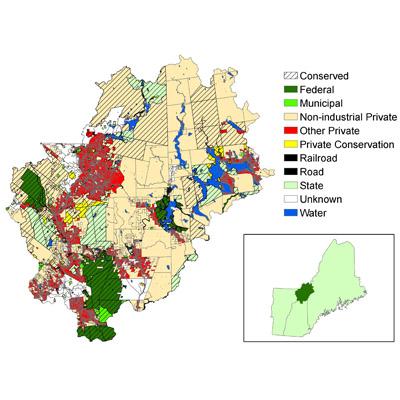Ecological Reserves, Conservation Practices, and a Sustainable Working Landscape in New England's Northern Forest

Land ownership patterns are changing in the Northern Forest, with many traditional forest lands being sold to investment organizations that have little interest in long-term forest management. These changes increase the likelihood that forest lands will be subdivided and developed, especially in sensitive or unique areas such as lakeshore zones and mountain ridges. With conservation funds limited, land protection efforts in the Northern Forest must focus on the most important areas for maintaining biological diversity, wildlife habitat, and landscape heterogeneity. It is also necessary to safeguard the economic and cultural traditions of the region by keeping the most productive forest lands in active management.
The process of systematically identifying key segments of the landscape for conservation is called ecological reserve design, a computer-based mapping/modeling tool. NSRC researchers employed such an approach, based on bird habitat and physical landscape features, on a 2.6-million acre region covering parts of Vermont, New Hampshire, and Maine, including the Upper Androscoggin and Connecticut River watersheds and encompassing the Lake Umbagog National Wildlife Refuge. The most effective design excluded high value timber lands, required the least area of land in the largest adjoining blocks, and provided the greatest area of habitat that would assure persistence and viability of bird populations.
To help maintain traditional forest economies, a network of ecological reserves can be established in the Northern Forest region while keeping high value forest lands in active management. Thus, protection of biological diversity and maintenance of traditional, local economies are goals that can be pursued simultaneously.
